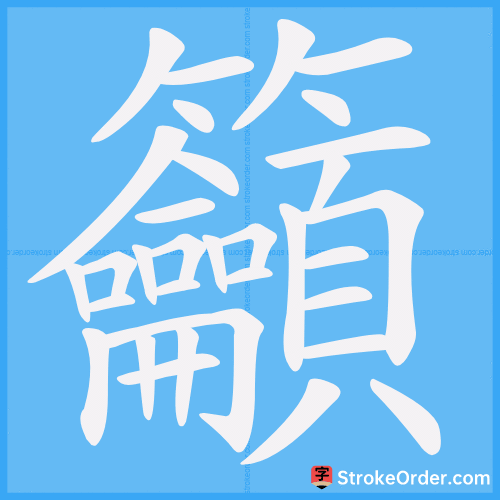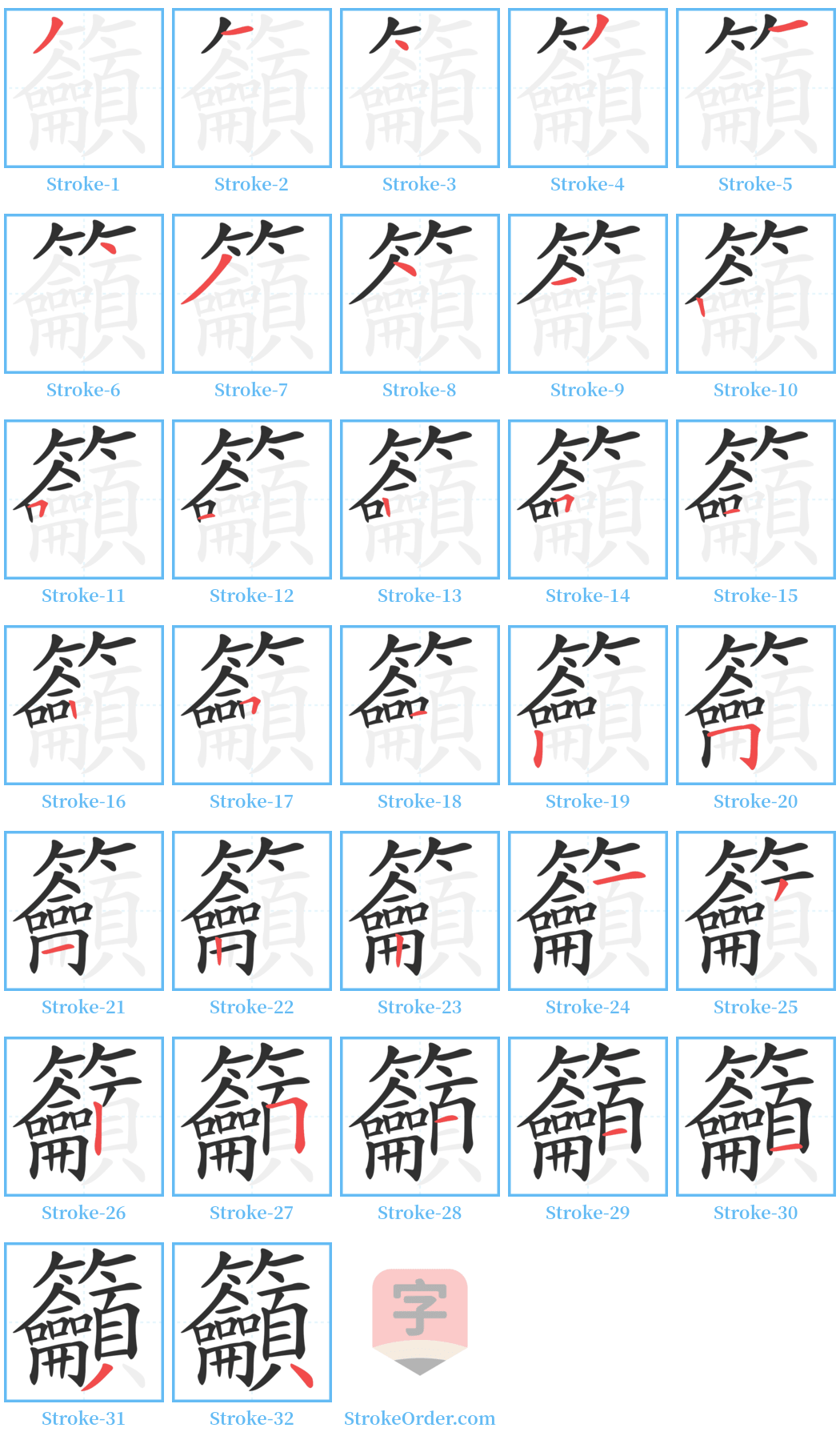籲 Stroke Order
Animated Stroke Order of 籲

Stroke Order Diagrams for 籲

Step-by-Step Handwriting Guide for 籲

Learn to Write Chinese Characters with Video Tutorials
Watch the video of writing the Chinese character "籲", learn the correct stroke order (笔顺) of the character "籲", and master the standard way of writing the character "籲".
Free Printable Handwriting Practice with Stroke Order: 籲
Printable Writing Practice Worksheet of "籲" in Portrait Orientation (Tian Zi Ge)

Printable Writing Practice Worksheet of "籲" in Landscape Orientation (Tian Zi Ge)

Information of 籲
Pinyin
yù
Radical
竹
Strokes
无 strokes
Usage
★★★
Definition
sh / hush, implore
Definition of 「籲」:
1. To shout; to call out.
2. Harmony; consonance.
Exclamation indicating surprise or doubt. As noted in "Yupian, Mouth Section": "吁, an expression of doubt, a term of astonishment." In "Wenxuan, Zhang Heng, Dongjing Fu": "吁! The virtue of Emperor Han, who could be compared to him?" In Tang Dynasty, Han Yu's "Jinxue Jie": "吁! You come forward! The large wood is for the beam, the small wood is for the purlin."
Verb meaning to sigh. Expression example: "long sighs and short laments." In Tang Dynasty, Li Bai's "Gufeng" poem number 56: "Offering you a sword, holding a treasure, I can only sigh." In Song Dynasty, Liu Zai's "Ye Quan Xing": "Those passing by should not sigh, and those listening should not exclaim."
Exclamation indicating surprise or doubt. As noted in "Yupian, Mouth Section": "吁, an expression of doubt, a term of astonishment." In "Wenxuan, Zhang Heng, Dongjing Fu": "吁! The virtue of Emperor Han, who could be compared to him?" In Tang Dynasty, Han Yu's "Jinxue Jie": "吁! You come forward! The large wood is for the beam, the small wood is for the purlin."
Verb meaning to sigh. Expression example: "long sighs and short laments." In Tang Dynasty, Li Bai's "Gufeng" poem number 56: "Offering you a sword, holding a treasure, I can only sigh." In Song Dynasty, Liu Zai's "Ye Quan Xing": "Those passing by should not sigh, and those listening should not exclaim."